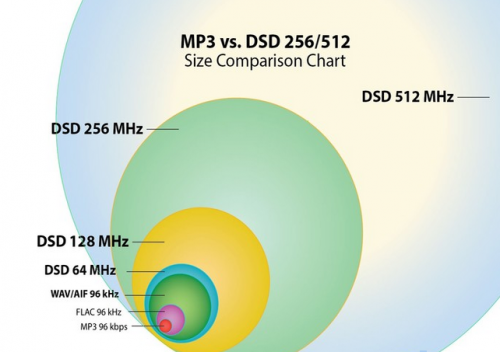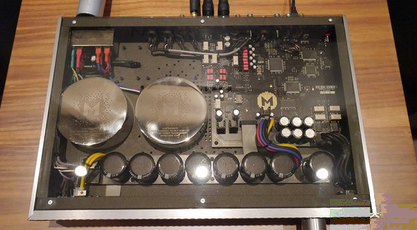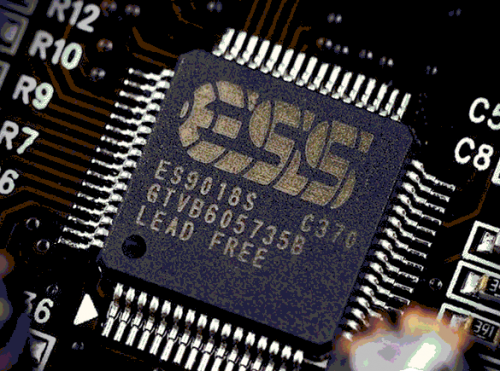Does the high quality sound of music phones come from audio decoding chips
Time:2023-10-09
Views:540
Among numerous digital products, smartphones can be said to be one of the most functional and integrated products. We can observe that mobile phone products are undergoing changes almost every year, which can be manifested in various aspects. In recent years, high fidelity sound quality has become another major selling point for mobile phone products after screens, photography, and scoring. Especially domestic mobile phone brands have put a lot of effort into HiFi functionality, which has also led some overseas brands to follow up, which is indeed a good thing for consumers. But what puzzles me is that these mobile phone manufacturers almost always focus on decoding chips when introducing their own products.


We often see some domestic brands introducing their HiFi phones at press conferences, claiming to use a very excellent decoding chip. For example, in 2014, Meizu focused on introducing the ESS9018K2M chip when it released the MX4PRO, while also connecting with HIFIMAN‘s flagship HM-901 and claiming that the overall sound performance was four times that of it; Meanwhile, ZTE also mentioned that the AXON Sky Machine 7 uses the same AK4490 decoding chip as the 10000 yuan player AK380.
In addition to mobile phone products, decoding chips are also the favorite features that audio manufacturers like to explain. However, in the introduction of audio products, the functions of decoding chips will be more specific. You may see some more difficult to understand vocabulary, such as multiple decoding chips, audio formats that support decoding, sampling frequencies that support decoding, signal-to-noise ratio, total harmonic distortion, and so on. I believe most people are not familiar with these data, let alone know what impact it will have on sound.
The main functions of decoding chips
In fact, the content just mentioned by the author may not be what most consumers truly care about. Generally speaking, public users are only interested in what can be heard, seen, and touched, and do not want to further understand the inherent nature of the product. For digital enthusiasts or enthusiasts, these materials may be even more interesting.
Friends who enjoy playing with digital products are generally particularly sensitive to parameters, such as SOC specifications in smartphones, computer hardware performance, monitor resolution, and camera pixels, which can become topics of discussion between them. Audio is considered an outlier in the digital industry, and there are relatively few parts in products that can be reflected through objective information. Audio decoding chips happen to be the original components that can be measured by data, which is also why many brands like it. Introducing decoding chips is much more reliable than relying on subjective listening.
Of course, in addition to having objective indicators, decoding chips are indeed an indispensable and important part of digital audio systems. Simply put, decoding chips are responsible for converting digital signals that cannot be perceived by humans into audible analog signals, and this process can be indirectly manifested. In recent years, Hi Res Audio (High Resolution Audio) has become a new trend in the audio industry. This audio standard is much higher than CD level lossless audio quality, but if you want to truly hear this high-quality music, high-quality decoding chips in the system must be indispensable.

High level decoding chip can be used to restore high-resolution audio
Similar to the definitions of lossy audio and lossless audio, high-resolution audio can also be divided into different levels, with a minimum standard of 24bit/44.1Khz audio files, which have a bit rate of 2116kbps. These audio files can already be played through audio decoding chips integrated in most smartphones. For DSD files in high resolution formats, the lowest level DSD64 has a bit rate of 5645kbps, while most decoding chips cannot play audio without software conversion and decoding. The sound heard after soft decoding cannot reflect the details of truly high resolution music. So the gap between decoding chips is obvious, and it relates to the most basic requirement of whether music can be played.

Signal-to-noise ratio is an important indicator for measuring the quality of decoding chips
The signal-to-noise ratio is also an important indicator in decoding chips, which reflects the ratio of normal sound signals to noise signals during playback. A high signal-to-noise ratio indicates that the audio signal is less interfered with and has a high degree of sound restoration. If the signal-to-noise ratio is low, you may hear some noise that does not exist in the original sound, resulting in a high degree of sound distortion. Therefore, decoding chips with high signal-to-noise ratio indicators are usually more excellent.
Other aspects are more worthy of attention
Seeing this, everyone may have recognized the core position of decoding chips in the entire audio system. But according to the product price information of well-known decoding chip manufacturers searched by the author at Shoufujia, the AK4490/AK4490EQ launched by AKM is priced at around 20 yuan per chip, and this chip is used in high-end player products of Alihe. The price of the PCM1792 decoding chip launched by Burr Brown is about 40 yuan, and this chip is used on LeEco‘s PAW GOLD. The price of the ES9018K2M decoding chip, which is the most commonly used in domestic HiFi phones, is about 40 yuan. The high-end decoding chip ES9018S/ES9028 PRO launched by ESS has a single price of 200 to 300 yuan, and the latest ES9038 PRO has a price of 480 yuan per chip, making it the most expensive decoding chip.
Audio decoding is not expensive
For these price information, there is no doubt that the price of decoding chips is similar, and there are no false labels or fake products sold. Those tens of thousands of decoders or players also use these things. Therefore, relying solely on common sense, we can determine that the decoding chip is not the core of the entire audio system, and even a key part of the decoder is not qualified. The fact is that the audio system is a complex whole. For example, for a decoder, the core part of an excellent audio decoding is not placed on the decoding chip. Factors such as analog circuit design, clock signal, digital signal processing, and power supply will have a greater impact on the sound, many of which require manufacturers to spend several times more cost and time than the decoding chip.



Decoding chips are not the core

A few years ago, decoding chips could also reach high standards
On the other hand, decoding chips themselves are already quite mature products. A few years ago, the indicators of decoding chips had already reached a very excellent level, so the sound performance will not change qualitatively due to different decoding chips. There are also many products in the market that use the latest and most expensive chips but have extremely mediocre sound. Therefore, it is not surprising that in the future, we will see price differences of several times or even more than ten times between different products using the same decoding chip, and other influencing factors are even more crucial.
Write at the end:
Through the introduction and analysis in the article, it is believed that it has detoxified friends of superstitious decoding chips. For the promotion of manufacturers in the future, everyone should also take a rational view. There is no product that can be compared to its own price several times higher every second. Of course, decoding chips are not a slow developing product. Nowadays, audio products that use the latest decoding chips can already achieve hard decoding of high resolution audio at the DSD256/DSD512 level, which older products cannot. If you are an OCD patient and have real high bit rate music on hand, there is no better way than to switch to a device equipped with the latest decoding chip.
|
Disclaimer: This article is transferred from other platforms and does not represent the views and positions of this site. If there is any infringement or objection, please contact us to delete it. thank you! |











